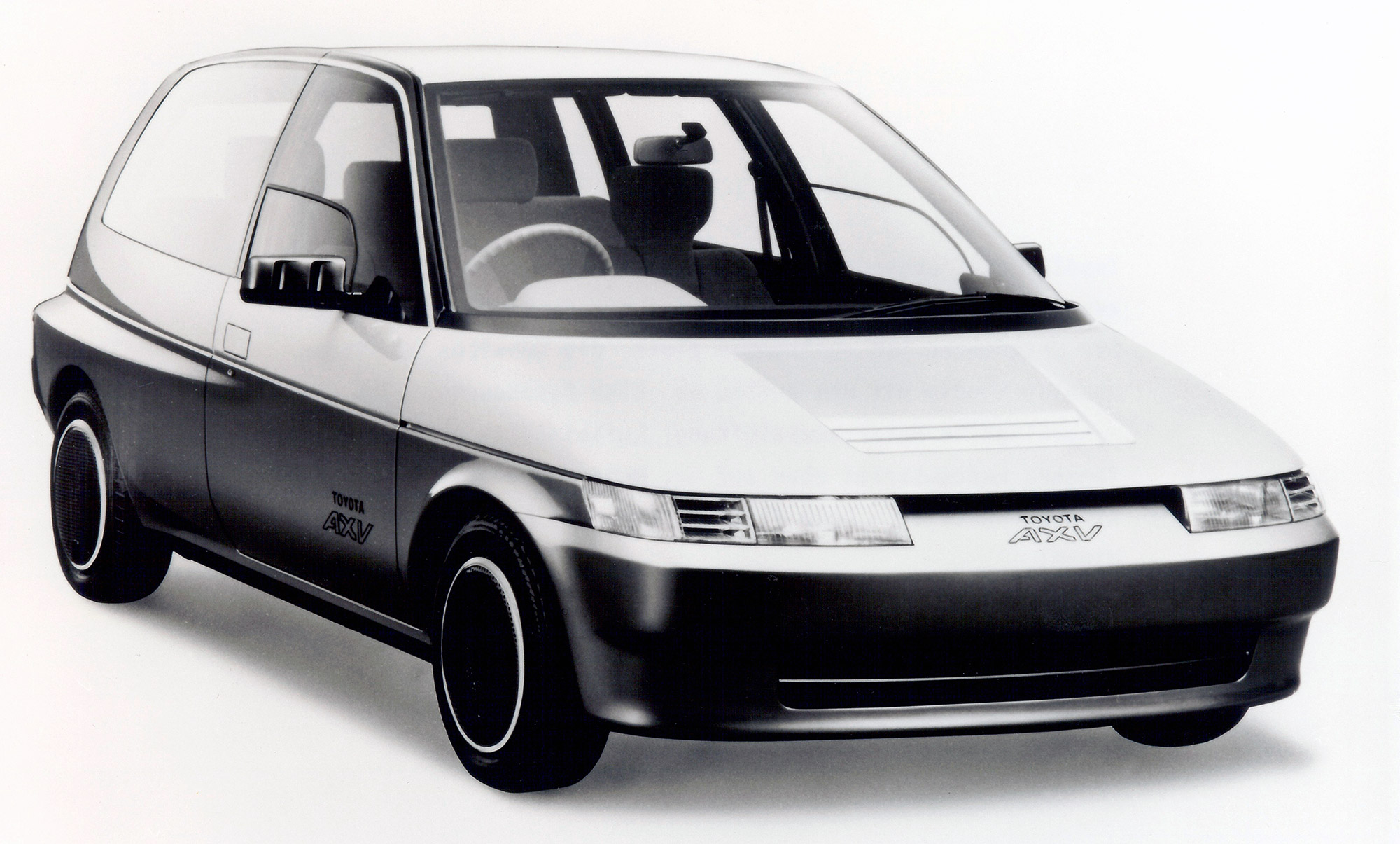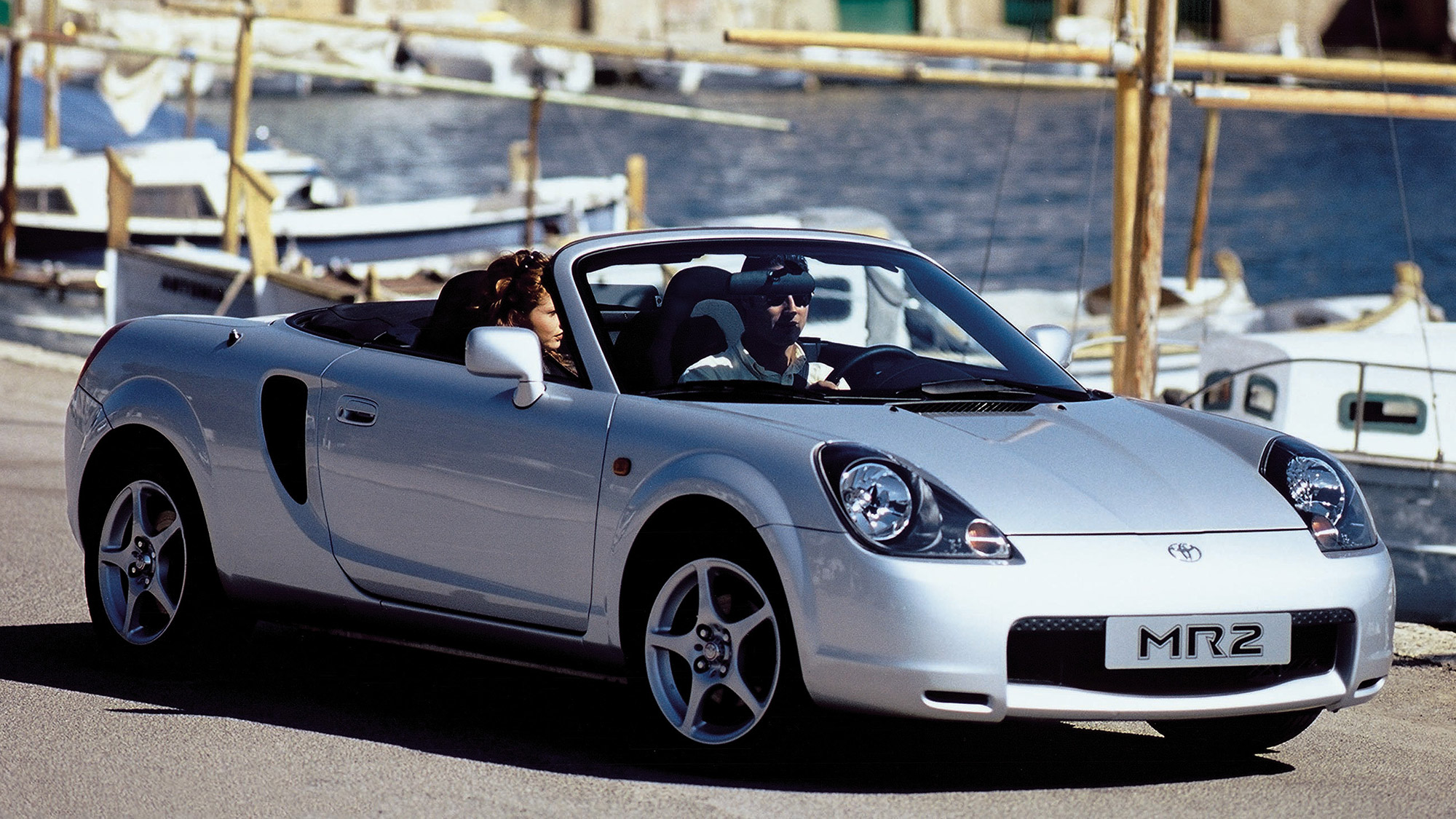The Toyota AXV-IV Was A Bizarro Lightweight GR 86 From The '90s
Welcome back to Cars Of Future Past, a new weekly series here at Jalopnik where we flip through the pages of history to explore long-forgotten concepts and how they had a hand in shaping the cars we know today. Last Wednesday's installment focused on the Honda S2000's often overlooked starting point — the Honda SSM — and likewise, this week's traces a similar through line from the '90s to one of Toyota's most celebrated modern enthusiast cars — only, with way more years in between.
What Is It?
This sprightly, sunny little canary of a sports car happened to have a decidedly less cheery name. Called the AXV-IV, it represented the fourth project in Toyota's Advanced Experimental Vehicle series that began with the first AXV in 1985.
That AXV was a futuristic econobox laser-focused on being as efficient as a carmaker could possibly build at the time. It weighed just 1,430 pounds, had only three passenger doors to save weight and was powered by a 1.1-liter turbocharged diesel three-cylinder. Add in bodywork devoid of any bumps or notches that would detract from the car's drag coefficient, and the original AXV was said to deliver 80 miles per gallon, according to Japanese Nostalgic Car.
The AXV-II and AXV-III that respectively followed in 1987 and 1991 ultimately proved to be previews of the Toyota Sera and Carina. But with the AXV-IV, the Japanese automaker returned to the project's practical purpose. Here, Toyota sprinkled its advanced weight-saving magic on a humble two-seat sports car, producing a design that should look more than a little familiar to anyone who's read the news this week.
The AXV-IV bowed at the 1991 Tokyo Motor Show, right alongside the AXV-III. Seemingly every aspect of the coupe was rendered in the pursuit of lightness. The body was a composite of ultra-lightweight aluminum, magnesium and carbon fiber; the springs, mounted inside MacPherson struts at the front, were made of fiberglass-reinforced plastic. A Toyota press release accompanying the car's unveiling mentioned that for the aluminum components, "aerospace technology" was used "for extruded parts, precision castings, and foamed and honeycomb panels."
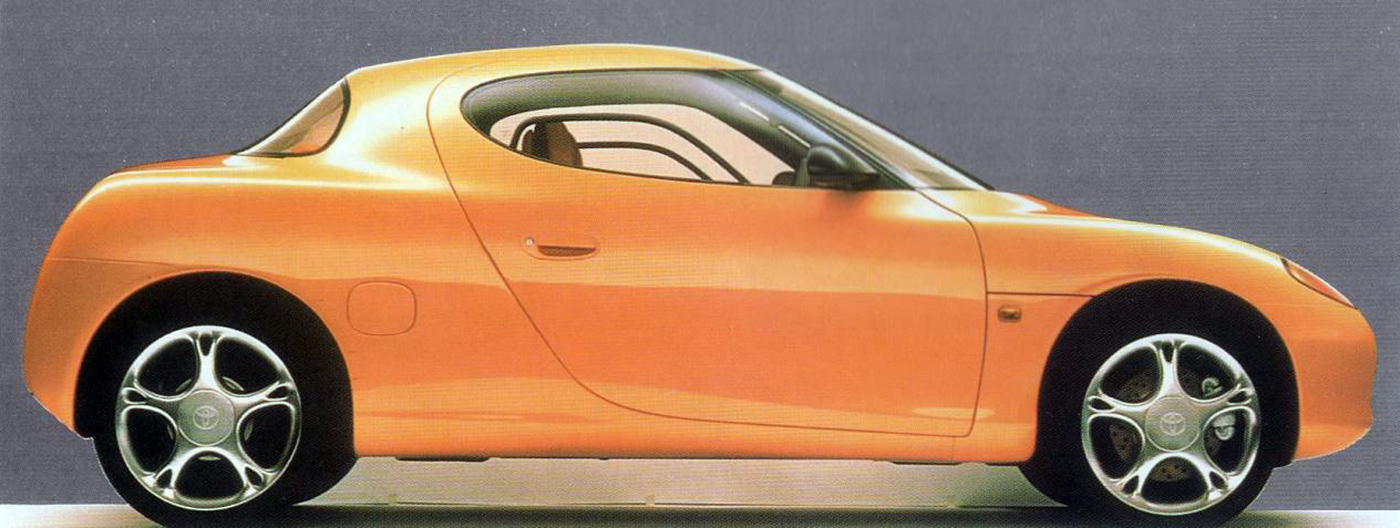
All told, the AXV-IV tipped the scales at an astonishingly light 992 pounds, according to Toyota's own data. With so little weight to lug around, the car was able to get by with an 804cc, direct-injected, two-stroke engine. The motor funneled 63 horsepower through a five-speed manual to skinny 135/55R16 rear tires touting "low rolling resistance and excellent driving performance."
The simplicity of the AXV-IV was further expressed in its exterior design. Again, the objective here was a shape tuned to slip through the air; to that end, the body was lean, rounded and unencumbered by purely aesthetic features that might slow it down or hamper fuel economy.
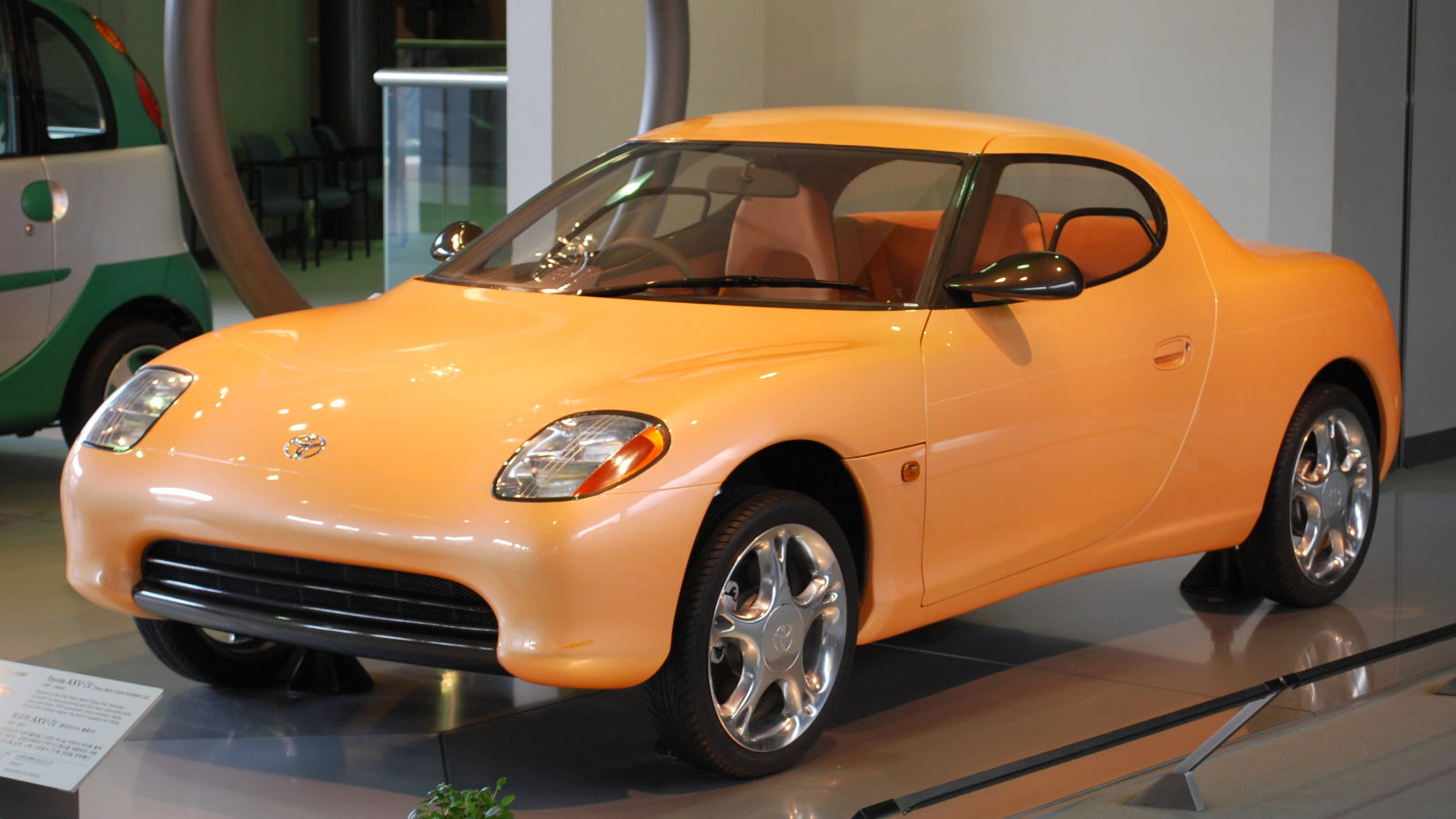
The design is cute, restrained and somewhat featureless, as with many Japanese concept cars from this era. Still, familiar cues connect the past and present. The way the wraparound windows sweep up toward the back of the greenhouse evokes the Lancia Stratos, while the overall stubby-yet-also-wedge-like profile calls to mind the FT-86 concept that predated the production 86 by a few years. Also we must acknowledge the taillights, clearly plucked from a first-gen RAV-4, as well as those delightfully period-appropriate brushed-chrome alloys.
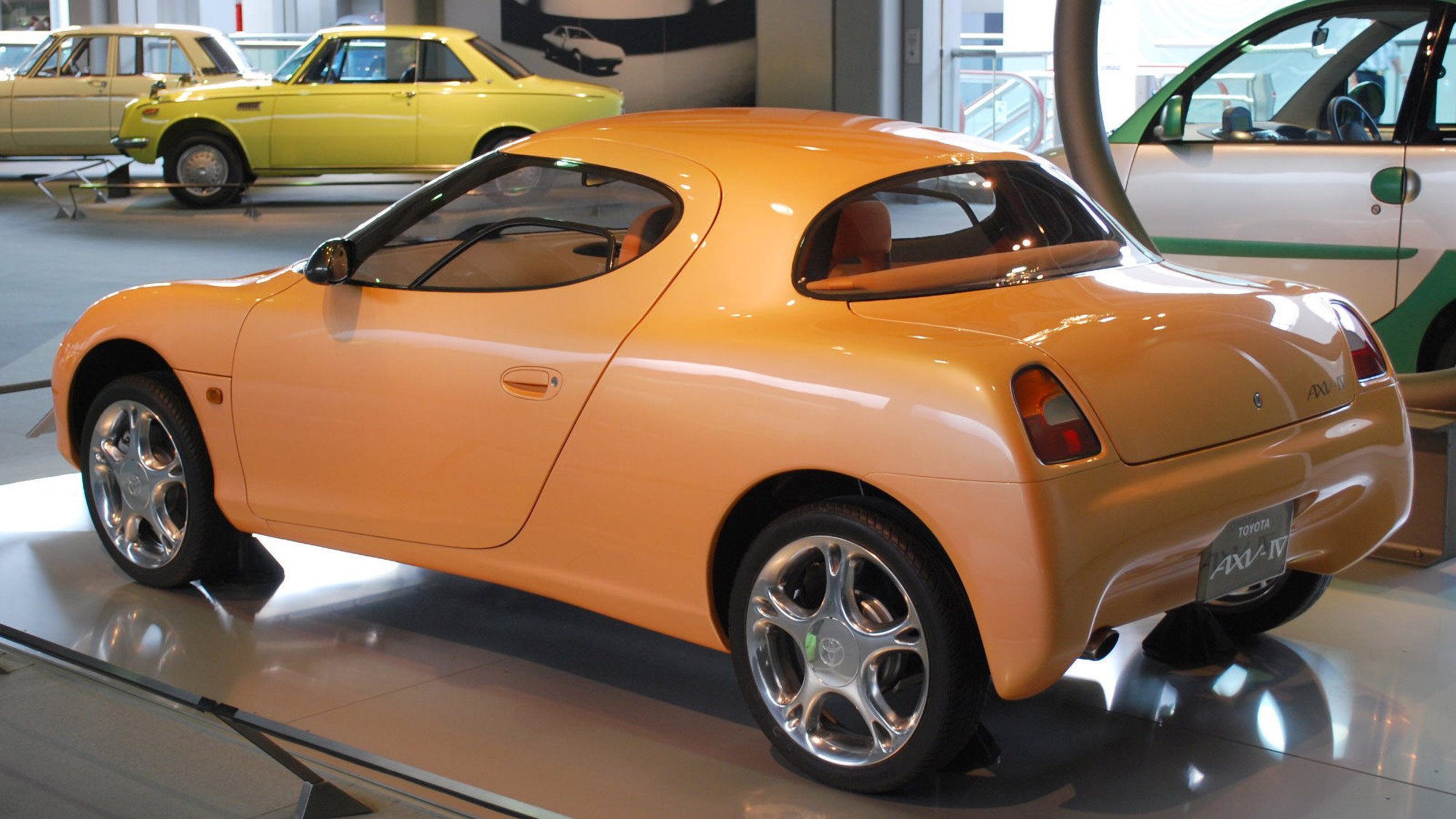
While Toyota sought "superior driving performance" with the AXV-IV, the press release stops short of calling it a sports car. More in line with kei-class rivals like the Autozam AZ-1 and Honda Beat, the AXV-IV was a very far cry from the Celicas, MR2s and Supras that led Toyota's performance range at the time. Still, the AXV-IV weighed about 680 pounds less than the 1,675-pound Beat, despite producing the same amount of power. It had a 600-pound advantage on the AZ-1, too.
Why Is It Good?
Front-engine, rear-wheel drive sports cars are of course precious by their very nature. But the AXV-IV was different from your garden-variety coupe in that Toyota set out to make it remarkably efficient without cramping on driving joy. In a way, that makes it probably closer in spirit to something like the Honda CR-Z than the GR 86: a "personal commuter" with some sporting flair, that is also better on gas than more serious performance compacts. Such vehicles were rare then — at least outside of Japan — and certainly much rarer now.
Did It Happen?
As you see it, no. But of course the AXV-IV's spirit lived on in a number of sporty Toyota products that followed. Hell — the very same year the world saw this coupe, Daihatsu brought its Miata-rivaling X-021 Roadster to the Frankfurt Motor Show. That too didn't see production.
Provided you can ignore the placement of the engine, the AXV-IV's philosophy is perhaps best observed in the ZZW30 MR-S/MR2 Spyder that hit the market in 1999. You could argue the Daihatsu Copen kei roadster is another descendent. And while the 86 unquestionably sits in a performance tier well above this concept, there's more than a passing resemblance in their profiles. Had the 86 entered production in the mid-'90s and not 2012, I get the sense it would have looked a lot like the AXV-IV.
Three decades on, Toyota still hasn't stopped prototyping baby sports cars and subsequently neglecting to release them. A true spiritual successor could have been the S-FR concept that emerged to much fanfare in Tokyo six years ago. Wouldn't you know, we never got that little guy either, though at least you can drive it in Gran Turismo Sport...
Can You Drive It In A Video Game?
...which is more than can be said about the AXV-IV. This concept never made it to a racing game, which is understandable when you consider its specs. A car as slow as the AXV-IV would've been rare to see in any title before Gran Turismo made kei cars cool and known outside Japan. Further complicating things, the AXV-IV was quite old by the time GT released at the end of the decade. I'm afraid to say the closest you'll ever get to one of these — save for a trip to Toyota's museum — is tailing a first-gen RAV-4 condemned to the rightmost lane of whatever highway you're on.

